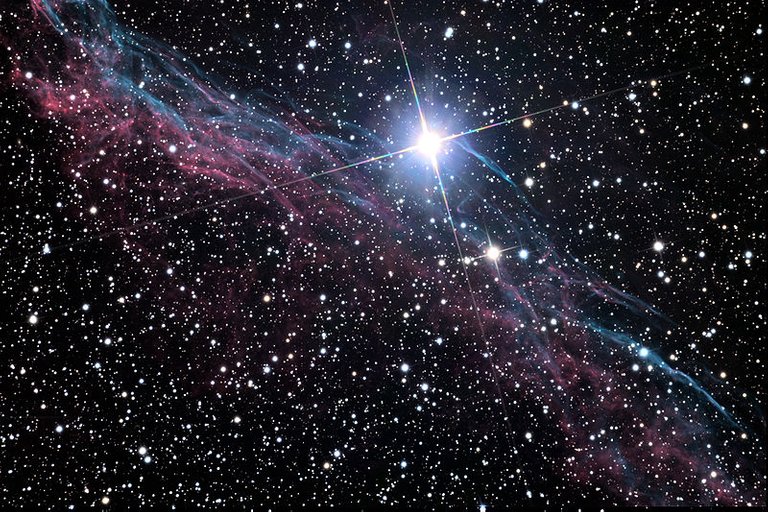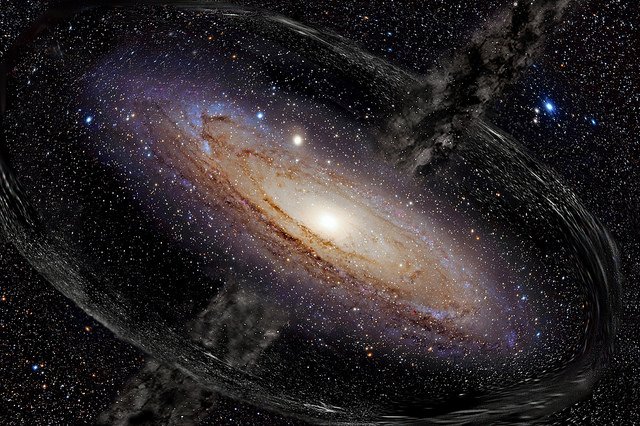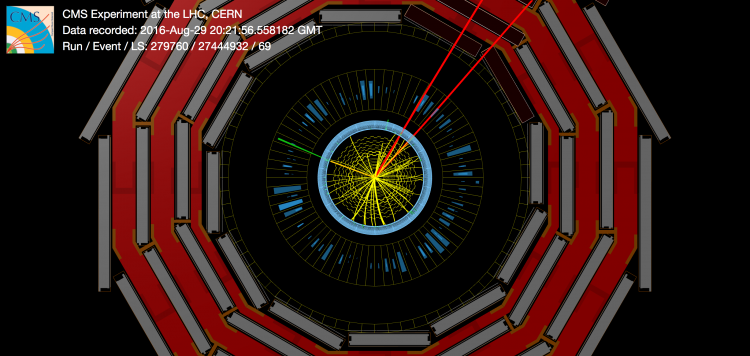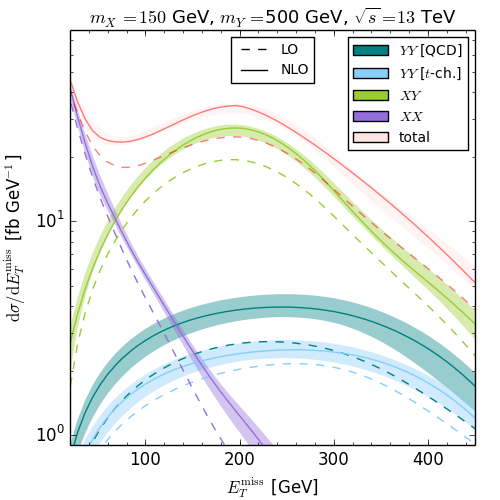Several months I didn’t write anything about particle and astroparticle physics! Time flies… Whilst I spent most of my Hive time on STEMsocial matters, my personal blog was left behind. Let’s therefore go for a change… at least today!
In this post, I discuss one of my recent research publication on dark matter at the Large Hadron Collider (the LHC) at CERN.

[image credits: Jschulman555 (CC BY 3.0)]
With two colleagues, we proposed a framework allowing to test a large class of dark matter models at once. From future results of the ATLAS and CMS collaborations, we could hence get insights on what dark matter could be or could not be.
But why dark matter as a start?
Dark matter in a nutshell
Dark matter is one of the most searched substance today, and for very good reasons: it is favoured by many cosmological observations. I won’t enter deep into details, as I wrote already quite a bit on the subject (see here for instance), but in a few words, we have a lot of indirect evidence for dark matter.
For instance, the study of the motion of the stars in the galaxies (or the motion of the galaxies themselves) reveals the presence of something invisible (i.e. dark matter). The structure of the galaxies as we see them requires dark matter. And as a last example, let’s mention the analysis of the fossil radiation left over from the Big Bang that implies the existence of dark matter.
 [image credits: Maxwell Hamilton (CC BY 2.0)]
[image credits: Maxwell Hamilton (CC BY 2.0)]
We however have no idea about the true nature of dark matter. This consists in one of the most important questions of high-energy physics at the present time.
Therefore, there is a lot of dark matter models on the market, and we have various experimental tools to track dark matter on Earth.
One of these tools is the LHC at CERN.
At the LHC, two highly-energetic proton beams are accelerated close to the speed of light and collide. The production of invisible dark matter particles is one of the possible results of such collisions, at least according to many motivated dark matter scenarios.
Detecting the invisible at the LHC
Once produced in an LHC collision, dark matter is invisible (it is not called dark matter for a random reason), so that no detector can obviously see it.
There is however a way out. Dark matter can be produced together with some visible stuff, and the latter can be observed in a detector. This consists in our handle on dark matter: the properties of the invisible are built from what is visible.
 [image credits: CERN]
[image credits: CERN]
Why is so? It is quite simple. Energy is conserved, as is momentum. This is a golden rule of physics whose consequences for an LHC collision are illustrated in the figure on the right.
We have produced here three visible objects (the green and the two red tracks). Momentum conservation implies that there must be something invisible that recoils against the three visible tracks (so that the sum of all momenta vanishes). This could be dark matter.
In other words, any apparently missing energy or momentum in the detector could be associated with dark matter.
Dark matter simulations at the LHC
It is now time to go back to the research article I want to discuss today. There are many dark matter models that have been proposed over time, and many of them feature similar properties when it comes to LHC phenomenology.
They in particular often include two new particles: a light dark matter particle and a heavy mediator that connects dark matter with the Standard Model of particle physics. In this setup, the mediator always decays into dark matter, so that it contributes to the production of invisible stuff at the LHC as well.
From those considerations, we implemented these two particles in standard LHC simulations tools. Physicists can play with the particle basic properties (masses, spins, couplings) and make predictions for the dark matter and mediator signals.
An example of the simulation results is illustrated in the figure below in which we show the missing energy spectrum (red) expected from a scenario featuring a light dark matter particle X and a moderately heavy mediator Y.

[image credits: arXiv]
This missing energy distribution is crucial as it is the direct manifestation of the invisible dark matter. The relevant part of the spectrum is when the missing energy is large, i.e. on the right part of the figure, as this coincides with a low-background situation. Conclusive statements can then be drawn by comparing predictions with data.
The novelty of our work is that we precisely calculated the full dark matter signal. We considered not only the dark matter contribution itself (XX, purple), but also the mediator ones (YY, teal and blue) and the joint dark matter - mediator one (XY, light green).
Those results interestingly show that the bulk of the signal comes from the associated XY production mechanism, and not from dark matter XX production.
Summary
In this post, I discussed one of my recent publications on dark matter at the Large Hadron Collider.
With collaborators, we designed a framework allowing us to make predictions for several dark matter models. The core idea consists in implementing, in LHC simulation tools, solely what is relevant for a dark matter LHC signal. This is often common across models so that many models can be considered at once.
We have moreover demonstrated the importance of considering the dark matter signal as a whole (with respect to naive expectations of what it should be) for a better assessment of the LHC sensitivity to dark matter.
Hopefully, our work will allow us to get better insights on dark matter, at least once our predictions will be confronted to data (this is actually coming).
PS: This article has been formatted for the STEMsocial front-end. Please see here for a better reading.
After reading your posts and some of the comments I, for a change, am left with no questions. But, I still wanted to stop by to thank you for keeping both your work and the community going. It is truly inspiring. To say the least! :)
Glad to read I was clear enough! Since I didn't post for some time, I tried to be as comprehensive as possible and avoid referring too much to older posts.
Thanks for your nice words by the way!
I will say well done to you @lemouth for your work on dark matters. Although from my own little study, i knew that several work has been carried out to authenticate existence of dark matters by studying the effect on visible objects, however am not sure if any data has been gathered on various studies and models use so far. Am not sure if the use of Satellite has successfully gather data in respect of dark matter.
However, i hope that your work using LHC will come up with sufficient data . Nice work Prof.
Thanks for passing by! Let me try to answer your comment part by part. Although I am not sure to fully get it, feel free to come back to me on anything needed.
This consists in one of the three examples of proof for the existence of dark matter that I mentioned in the second part of the post. It is actually the oldest of all proofs.
In the 30ies, it was shown by F. Zwicky that the motion of the galaxies could not be explained by Newtonian gravity in combination with only the visible matter. This was confirmed later on many times. This led to two options. With the former, we concluded that there must be some invisible mass somewhere. That is the dark matter hypothesis. With the latter option, we concluded that gravity has to be modified at large scale. This option is less favored, but not ruled out.
The results of various satellite missions can be used to constrain dark matter, for instance through the study of the cosmic microwave background (the fossil radiation left over from the big bang, as also mentioned in the second section of my post) or cosmic rays (dark matter may influence the amount of cosmic rays we see on Earth.
I hope this clarifies. If not, as I said, please come back to me!
Fascinating!
Retweeted for more visibility. 😊✌
Thanks a lot! This is very appreciated. Believe it or not, I don't have any Twitter account (but you can give a look to the STEMsocial account if you feel so).
oh .. this topic excites me. I had read an article about it in the past few months. I try to follow the developments. the source is available in cern experiments. Thank you for the nice information you shared. especially if you love a space like me. :)
I'm sorry for my bad english.
No problem for the English. Do you mind sharing the CERN article you have read about recently? If you have any question about it, I would be very happy to answer them!
the article is not the right word. I typed wrong. I mean news about dark matter. :) I could not find it. but what you already know better than me :) keep sharing with us. I will read with interest..
I will definitely continue! I still have chosen what I will discuss on my next post. It may be dark matter or other particle physics stuff. I will decide next week :)
This post has been voted on by the STEMsocial curation team and voting trail. It is eligible for support from @curie and @minnowbooster.
If you appreciate the work we are doing, then consider supporting our funding proposal, approving our witness (@stem.witness) or delegating to the @steemstem account (for some ROI).
For additional information please join us on the STEMsocial discord and to get to know the rest of the community!
Thanks for having used the stem.openhive.network app. This granted you a stronger support. Note that including @steemstem in the list of beneficiaries of this post could have yielded an even more important support.
This post was shared in the Curation Collective Discord community for curators, and upvoted and reblogged by the @c-squared community account after manual review.
@c-squared runs a community witness. Please consider using one of your witness votes on us here